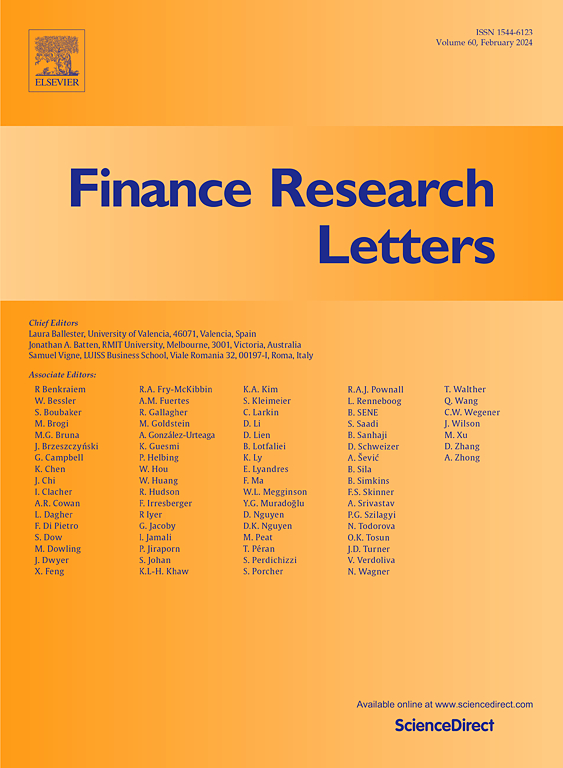Quantifying disruption in the age of AI: An AI-based approach to evaluating startup innovation and investment potential
IF 7.4
2区 经济学
Q1 BUSINESS, FINANCE
引用次数: 0
Abstract
Clayton Christensen's disruptive innovation theory highlights how technologies transform industries, but quantifying disruption remains challenging. This paper introduces Disruptor Detective, an AI-driven tool that evaluates companies using seven criteria of disruptive innovation, integrating financial data and natural language processing. Given the limited data available about private companies and early-stage startups, this approach provides an objective framework for investors to assess their disruptive potential. We analyze 12 generative AI firms, including OpenAI and Hugging Face, to demonstrate the tool in action. The tool revealed varied disruption scores, with firms developing open-source models, such as Hugging Face, exhibiting the most substantial disruptive potential. In contrast, firms focused on specialized applications show more incremental innovation. Additionally, disruption scores exhibit a positive, albeit modest, correlation with financial metrics such as valuation and revenue. The findings provide a scalable, data-driven approach to evaluating disruptive innovation, bridging the gap between qualitative theory and quantitative assessment in venture capital.
量化人工智能时代的颠覆:基于人工智能的创业创新和投资潜力评估方法
克莱顿•克里斯滕森(Clayton Christensen)的颠覆性创新理论强调了技术如何改变行业,但量化颠覆仍然具有挑战性。本文介绍了破坏者侦探,这是一种人工智能驱动的工具,它使用颠覆性创新的七个标准来评估公司,整合了财务数据和自然语言处理。考虑到关于私营公司和早期创业公司的数据有限,这种方法为投资者评估它们的颠覆性潜力提供了一个客观的框架。我们分析了12家生成式人工智能公司,包括OpenAI和hug Face,以展示该工具的实际应用。该工具揭示了不同的颠覆性得分,开发开源模型的公司,如“拥抱脸”,展示了最具实质性的颠覆性潜力。相比之下,专注于专业应用的公司表现出更多的渐进式创新。此外,颠覆性得分与估值和收入等财务指标呈正相关,尽管程度不大。研究结果为评估颠覆性创新提供了一种可扩展的、数据驱动的方法,弥合了风险资本中定性理论和定量评估之间的差距。
本文章由计算机程序翻译,如有差异,请以英文原文为准。
求助全文
约1分钟内获得全文
求助全文
来源期刊

Finance Research Letters
BUSINESS, FINANCE-
CiteScore
11.10
自引率
14.40%
发文量
863
期刊介绍:
Finance Research Letters welcomes submissions across all areas of finance, aiming for rapid publication of significant new findings. The journal particularly encourages papers that provide insight into the replicability of established results, examine the cross-national applicability of previous findings, challenge existing methodologies, or demonstrate methodological contingencies.
Papers are invited in the following areas:
Actuarial studies
Alternative investments
Asset Pricing
Bankruptcy and liquidation
Banks and other Depository Institutions
Behavioral and experimental finance
Bibliometric and Scientometric studies of finance
Capital budgeting and corporate investment
Capital markets and accounting
Capital structure and payout policy
Commodities
Contagion, crises and interdependence
Corporate governance
Credit and fixed income markets and instruments
Derivatives
Emerging markets
Energy Finance and Energy Markets
Financial Econometrics
Financial History
Financial intermediation and money markets
Financial markets and marketplaces
Financial Mathematics and Econophysics
Financial Regulation and Law
Forecasting
Frontier market studies
International Finance
Market efficiency, event studies
Mergers, acquisitions and the market for corporate control
Micro Finance Institutions
Microstructure
Non-bank Financial Institutions
Personal Finance
Portfolio choice and investing
Real estate finance and investing
Risk
SME, Family and Entrepreneurial Finance
 求助内容:
求助内容: 应助结果提醒方式:
应助结果提醒方式:


